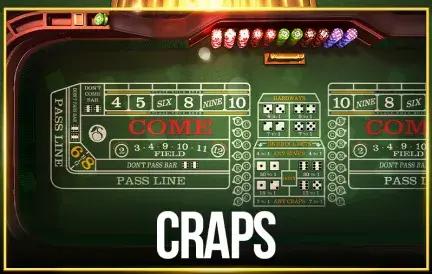How to Play Poker: Learn the Rules, Hands & Easy Strategies
May 26th, 2025
24029
Want to master the table? Whether you're sitting at a casino, playing from home, or joining an online game, poker offers excitement, challenge, and big rewards. This guide breaks down how to play poker, including rules, hand rankings, game flow, and beginner tips — all in simple language that anyone can understand. We'll cover the essential rules, hand rankings, and simple strategies to get you started on your poker journey. 🚀
Ready to turn your curiosity into confidence? Whether you want to play for fun, sharpen your skills, or win real money, understanding the basics is your first step. Let’s dive into the world of poker and unlock the secrets to playing smart and winning big! 🔥
What Is Poker
- Engaging gameplay that combines skill and chance
- Available in many variants: Texas Hold’em, Omaha, Seven-Card Stud
- Opportunities to compete against players worldwide online
- Improves strategic thinking and decision-making skills
- Accessible on desktop, mobile, and live dealer platforms
- Can be challenging for beginners without understanding hand rankings
- Skill-based nature means consistent losses are possible for less experienced players
Poker is a strategic card game where players compete to form the best hand or force others to fold. It's not just about luck — it's about psychology, probability, and decision-making. You can play for fun, for chips, or how to play poker for money online if you’re ready.
🎲Many believe poker originated in the early 19th century in New Orleans, drawing inspiration from older card casino games like Poque (French) and As-Nas (Persian). It spread throughout the American frontier and has since evolved into a global phenomenon. Today, you can find a poker game almost anywhere, from casual kitchen tables to glamorous casino floors and the vast digital tables of how to play online poker. Its enduring appeal lies in its depth; it's easy to learn the basics, but mastering the nuances can take a lifetime.
Types of Poker Games
"Poker" isn't a single game but a category encompassing many variants. Each has unique rules, but they often share hand rankings and betting principles. Understanding the different types is crucial for anyone wanting to learn how to play poker comprehensively. There are many types of poker, but here are the most popular:
| 🃏 Poker Variant | 🔍 Description |
|---|---|
| Texas Hold’em | The most played version worldwide. Each player gets 2 hole cards and shares 5 community cards. |
| Omaha | Like Hold’em, but with 4 hole cards. You must use exactly 2 hole cards and 3 community cards. |
| 7-Card Stud | No community cards. Players receive 7 cards individually over several rounds. |
| 5-Card Draw | Classic home-style poker. Draw cards after betting to build the best 5-card hand. |
| Short Deck Hold’em | A faster-paced game with a 36-card deck (2s through 5s removed). More action-packed. |
Poker rules vary by version, but the core objective remains the same: win chips by having the best hand or making everyone else fold.
Expert Tip: Players bet in rounds, aiming to make the strongest five-card hand or to bluff opponents.
Poker Hand Rankings
Before you start playing, it’s essential to understand how hands are ranked. This knowledge is the foundation of how to play poker step by step — without it, you won’t know when you’re winning or when you should fold. These rankings determine the strength of your hand and are universal across most poker variants, including Texas Hold'em, Omaha, and Stud. Knowing these by heart is non-negotiable.
From High Card to Royal Flush
Here’s the full list of poker hands, ranked from weakest to strongest:
| Hand Type | Example | Description |
|---|---|---|
| High Card | A♠ | No pair — just the highest card |
| One Pair | 8♦ 8♣ | Two cards of the same value |
| Two Pair | 7♥ 7♠ 4♣ 4♦ | Two different pairs |
| Three of a Kind | Q♣ Q♥ Q♦ | Three cards with the same value |
| Straight | 5♠ 6♦ 7♥ 8♣ 9♦ | Five cards in sequence |
| Flush | A♦ J♦ 8♦ 4♦ 2♦ | Сards of the same suit |
| Full House | 10♥ 10♣ 10♦ 6♣ 6♠ | Three of a kind + a pair |
| Four of a Kind | K♠ K♥ K♦ K♣ | Four cards with the same value |
| Straight Flush | 3♠ 4♠ 5♠ 6♠ 7♠ | Straight + same suit |
| Royal Flush | 10♣ J♣ Q♣ K♣ A♣ | Ace-high straight flush (the best possible hand) |
💡 Tip: In case of a tie (e.g., both have a pair), the highest kicker card decides the winner.
Why Hand Rankings Are Essential to Know First
Knowing hand rankings inside out is the bedrock of poker how to play. Every decision you make—whether to bet, call, raise, or fold—is influenced by the strength of your hand, the potential strength of your opponents' hands, and how your hand might improve (or be beaten) as more cards are dealt. Learning the hand rankings first lets you:
- Understand when your hand is strong enough to bet or raise
- Spot when you're likely behind and should fold
- Read opponents better based on what they might be holding
👉 Without mastering this, you'll never play how to play poker like a pro.
Quick Reference Chart
Here’s a quick cheat sheet to keep handy. Poker Hand Rankings (Strongest to Weakest):
| Rank | Hand Name | Example | Description |
|---|---|---|---|
| 1 | Royal Flush | A♦️ K♦️ Q♦️ J♦️ 10♦️ | Ten to Ace of the same suit. |
| 2 | Straight Flush | 8♠️ 7♠️ 6♠️ 5♠️ 4♠️ | Five cards in sequence, same suit. |
| 3 | Four of a Kind | Q♠️ Q♦️ Q♣️ Q♥️ 7♠️ | Four cards with the same value. |
| 4 | Full House | K♠️ K♦️ K♣️ 5♥️ 5♠️ | Three of a kind + a pair. |
| 5 | Flush | A♠️ J♠️ 8♠️ 5♠️ 2♠️ | Сards of the same suit, not in sequence. |
| 6 | Straight | 9♠️ 8♦️ 7♣️ 6♥️ 5♠️ | Five cards in sequence, different suits. |
| 7 | Three of a Kind | 7♠️ 7♦️ 7♣️ K♥️ 2♠️ | Three cards with the same value. |
| 8 | Two Pair | K♠️ K♦️ Q♣️ Q♥️ 7♠️ | Two different pairs. |
| 9 | One Pair | A♠️ A♦️ K♣️ J♥️ 7♠️ | Two cards with the same value. |
| 10 | High Card | A♠️ K♦️ 9♣️ 5♥️ 2♠️ | Highest card plays if no other hand is made. |
Basic Rules of Texas Hold’em (Most Popular Variant)
Texas Hold’em is the version most people mean when they ask how to play poker for beginners. It’s the main format in tournaments and home games alike. The game combines luck, logic, and timing — and it’s easier to learn than it looks.
Let’s break down the core rules by stage:
The Blinds and Button
Before any cards are dealt, two players must post "blinds" – forced bets that initiate the action and create a starting pot.
- The Button (Dealer Button): A round disc that indicates which player is the nominal dealer for the current hand. It moves one position clockwise after each hand. The player on the button acts last in post-flop betting rounds, which is a significant strategic advantage.
- Small Blind (SB): The player immediately to the left of the button posts the small blind. This is a predetermined amount.
- Big Blind (BB): The player immediately to the left of the small blind posts the big blind. This is typically twice the amount of the small blind.
💡For example, in a 1/1/2 No-Limit Hold'em game, the small blind is $1, and the big blind is $2. Blinds ensure there's always money to play for.
These blinds drive the action by building the pot — a key part of how to play poker in casino settings.
Dealing the Cards
Once the blinds are posted, each player is dealt two private cards, face down. These are known as "hole cards" or "pocket cards." Only the player they are dealt to can see them. The objective is to combine these hole cards with five community cards (dealt later) to make the best possible five-card poker hand. Each player receives 2 face-down “hole cards.” Only the player can see their own cards.
👁 These cards, combined with five community cards, form your best five-card poker hand.
Betting Rounds
Texas Hold'em involves up to four betting rounds. A player can win the pot at any stage by making a bet that isn't called by any other active player. If multiple players remain after the final betting round, a showdown occurs. Let's look at how to play poker step by step through these rounds: There are four betting rounds in Texas Hold’em:
| Stage | Description |
|---|---|
| Pre-Flop | Hole cards are dealt to each player. Players act in order, starting left of the Big Blind. Actions: Fold, Call, or Raise. |
| Flop | Dealer reveals 3 community cards face-up. Another betting round begins. |
| Turn | A 4th community card is dealt. Another round of betting follows. |
| River | The 5th and final community card is revealed. Final betting round before showdown. |
Each round lets players use new information and bet strategically — that’s what separates good from great in how to play basic poker.
Smart Tip: Knowing hand rankings is essential, from high card up to Royal Flush.
Showdown and Determining the Winner
After the final bets are made, remaining players reveal their hole cards:
- Use the best 5-card combo (your 2 + 3, 4, or 5 community cards).
- The highest-ranking hand wins the pot.
- If hands are identical, the pot is split evenly.
🔥 You don’t always need the best hand to win. Sometimes, smart bluffing gets everyone to fold — a core part of poker how to play strategy.
Poker Betting Actions Explained
Understanding betting actions is central to learn how to play poker and read your opponents effectively. These moves are how players communicate strength, weakness, or confusion at the table.
Check, Bet, Call, Raise, Fold
These are the five fundamental actions a player can take during a betting round (though "check" is only available if no prior bet has been made in that round):
| Action | Meaning |
|---|---|
| Check | Pass the action to the next player without betting (only if no bet was made yet) |
| Bet | Put chips into the pot to start the action |
| Call | Match the current bet made by another player |
| Raise | Increase the current bet — forces others to match or fold |
| Fold | Throw away your hand and forfeit any chance at the pot |
💡 Knowing when to fold and when to raise is crucial — especially if you're just learning how to play poker simple.
Understanding Pot Odds and Implied Odds
These are slightly more advanced concepts but are vital for making profitable decisions, especially for players looking to play poker like a pro. Pot odds help you decide whether a call is worth it based on the size of the pot versus the size of the bet.
Formula:
Pot Odds = (Bet to call) ÷ (Total pot after your call)
📌 Example:
- Pot: $80
- Opponent bets: $20
- You must call $20 to win $100 → Pot odds = 20 / 100 = 20%
If your chance of hitting your winning card is greater than 20%, it's a +EV (positive expected value) call.
👉 Implied odds consider how much you could win later in the hand if you hit your card and get paid. They are trickier to calculate but essential to how to play poker game at a higher level.
Betting Limits (No-Limit, Pot-Limit, Fixed-Limit)
The betting structure significantly impacts strategy and how much can be wagered at any time. This is important whether you how to play poker online for money or in a live setting. Different poker games have different betting structures. Here's how they compare:
| Limit Type | Description |
|---|---|
| No-Limit | You can bet all your chips at any time. Common in Texas Hold’em. |
| Pot-Limit | You can bet up to the size of the pot. Popular in Omaha. |
| Fixed-Limit | Bet sizes are restricted and increase by street (e.g., $2/$4). Less aggressive format. |
🎯 No-Limit offers the most freedom and is usually where players start when asking how to play poker online for money.
Game Flow: Step-by-Step Walkthrough
Now that you understand hand rankings, rules, and betting — let’s walk through a full round of poker. This section is perfect for those who want to how to play poker at home with friends or get comfortable before going online.
Setup and Seating
Players buy chips from the online casino or host. One player starts with the dealer button. The player to the button's left posts a $1 small blind (SB), and the next player posts a $2 big blind (BB). Table positions are generally referred to as:
- Gather 2–10 players.
- Assign one player the dealer button (rotates clockwise every hand).
- Place small blind and big blind bets.
- Shuffle and cut the deck.
🎯 If you're learning how to play poker for dummies, start with chips in equal stacks and use printed hand charts for support.
Blinds and Dealing
- The small blind (left of dealer) posts the small bet.
- The big blind (left of small blind) posts the full starting bet.
- Each player is dealt 2 private cards face down (hole cards).
🃏 This setup applies whether you’re playing in a casino, online, or learning how to play poker online via an app.
Progression Through Each Street (Flop, Turn, River)
Let's say our hero is in Middle Position (MP) with A♦️ K♦️. Here’s how a full hand plays out:
- Pre-Flop: Players act after seeing their 2 hole cards.
- Flop: Dealer reveals 3 face-up community cards. Betting round follows.
- Turn: Dealer reveals 1 more card. Another betting round.
- River: Dealer reveals the final 5th card. Final round of betting.
💡 Tip: The more community cards are revealed, the clearer your hand strength becomes — key to how to play online poker successfully.
Showdown and Winning the Pot
- If 2+ players remain after the river, cards are revealed.
- Each builds the best 5-card hand from their 2 hole cards + community cards.
- Best hand wins the pot.
🏆 If everyone else folds, you win without even showing your cards — an important lesson in how to play poker like a pro.
Poker Strategies for Beginners
Mastering these basic strategies will dramatically improve your win rate, especially if you’re just starting out and want to learn how to play poker in a smart, effective way. Once you understand the rules and hand rankings, you can start thinking about strategy. For those learning how to play poker for dummies or just starting out, these fundamental strategies can make a big difference.
Top Tip: Position at the table affects strategy, with later positions offering more information before acting.
Play Tight but Aggressive
This is the golden rule for beginners. It means:
- Only play strong starting hands (e.g., high pairs, big suited connectors).
- But when you enter a pot — play aggressively (bet and raise, not call).
👉 Why? Because you:
- Reduce the chance of being outdrawn
- Build the pot when you’re ahead
- Make weaker hands fold
This simple shift helps players how to play poker for money online more profitably.
Know When to Fold
Beginner mistake: “I’ve already put money in the pot, I have to call.”
❌ Wrong.
Knowing when to fold is one of the most powerful skills in poker:
- Fold when the board is dangerous.
- Fold when an opponent’s actions clearly show strength.
- Fold when your hand has no real chance to improve.
This is key whether you play live, at home, or want to understand how to play poker online for money wisely.
Position Matters — Act Last Whenever Possible
Your position at the table relative to the dealer button is incredibly important in poker, especially in games with community cards like Hold'em and Omaha. Where you sit at the table changes everything.
- Late position = more information, better decisions
- Early position = you act first with less information
💡 Tip: In late position (like the dealer), you can play more hands and bluff more effectively. This is a big advantage in how to play poker game strategically.
Don’t Bluff Too Often
Don’t Bluff Too Often — it’s a classic trap for new players eager to outsmart their opponents. While bluffing can be a powerful tool, overusing it quickly gives away your strategy and costs you chips. Mastering when and how to bluff separates casual players from real pros. Let’s explore why patience and timing matter more than constant deception in winning poker! Yes, bluffing is part of poker. But…
⚠️ Most beginners bluff way too much.
Use these rules:
- Don’t bluff against multiple players.
- Don’t bluff players who always call.
- Bluff when you can represent a strong hand believably.
Bluff less, value bet more. That’s what makes a real pro — a core part of how to play poker like a pro and succeed in various table games where strategy beats luck every time.
Common Mistakes to Avoid
Even experienced players slip up sometimes. But beginners especially should watch out for these common errors when they learn how to play poker — because avoiding them can save you chips, frustration, and lost opportunities at the table. Knowing what pitfalls to steer clear of will help you build a strong foundation and start winning more consistently. Let’s explore the mistakes that can hold you back and how to dodge them like a pro!
Playing Too Many Hands
You don’t have to play every hand. This is arguably the number one mistake beginners make. The desire to be involved in the action leads them to play weak starting hands.
Playing weak hands just because they look "okay" leads to losing chips over time.
✅ Fix it:
- Use a starting hand chart
- Stick to stronger hands, especially in early position
- Focus on quality over quantity — this is key to how to play basic poker
Ignoring Position and Betting Patterns
Poker isn’t just about the cards — it’s about when you act and how your opponents behave.
Beginners often:
- Play the same range from early and late position
- Miss signals in betting patterns
- Act without knowing who’s left to act behind them
✅ Fix it:
- Observe others — who bets strong, who plays passively?
- Use position to gather info before making a move
This is a huge edge if you’re learning how to play poker in casino or online.
Getting Emotionally Attached to Hands
“I’ve got A♦K♠ — I can’t fold now!”
Wrong mindset. Big cards pre-flop don’t always win post-flop.
✅ Fix it:
- Don’t get married to a hand
- Be willing to let go when the board turns ugly
- Focus on long-term EV (expected value), not short-term pride
Discipline is what separates casual players from those who how to play poker like a pro.
Frequently Asked Questions About Playing Poker
Is poker more luck or skill?
Poker is a blend of both, but over the long term, skill dominates. Luck affects short-term results, but players who master strategy, psychology, and math consistently win.
What’s the best starting hand in poker?
The best starting hand is pocket Aces (A♠ A♦). It gives you the highest chance to win pre-flop and is a strong favorite against any other hand. In Texas Hold’em, the universally acknowledged best starting hand is Pocket Aces (A-A). Two Aces give you the highest possible pair before the flop and a strong foundation to build a winning hand.
How much money do I need to start playing?
You can start with as little as $20-$50 in low-stakes games. For online play, many platforms allow micro-stakes games with very small buy-ins. Always play within your budget.
Can I play poker for free online?
Yes! Many sites and apps offer free poker games or play-money tables, which are perfect for beginners to practice how to play poker online without risking real money. These free options are a fantastic resource for anyone wanting to dip their toes into the world of poker and understand how to play poker simple before committing any funds.
Related posts











